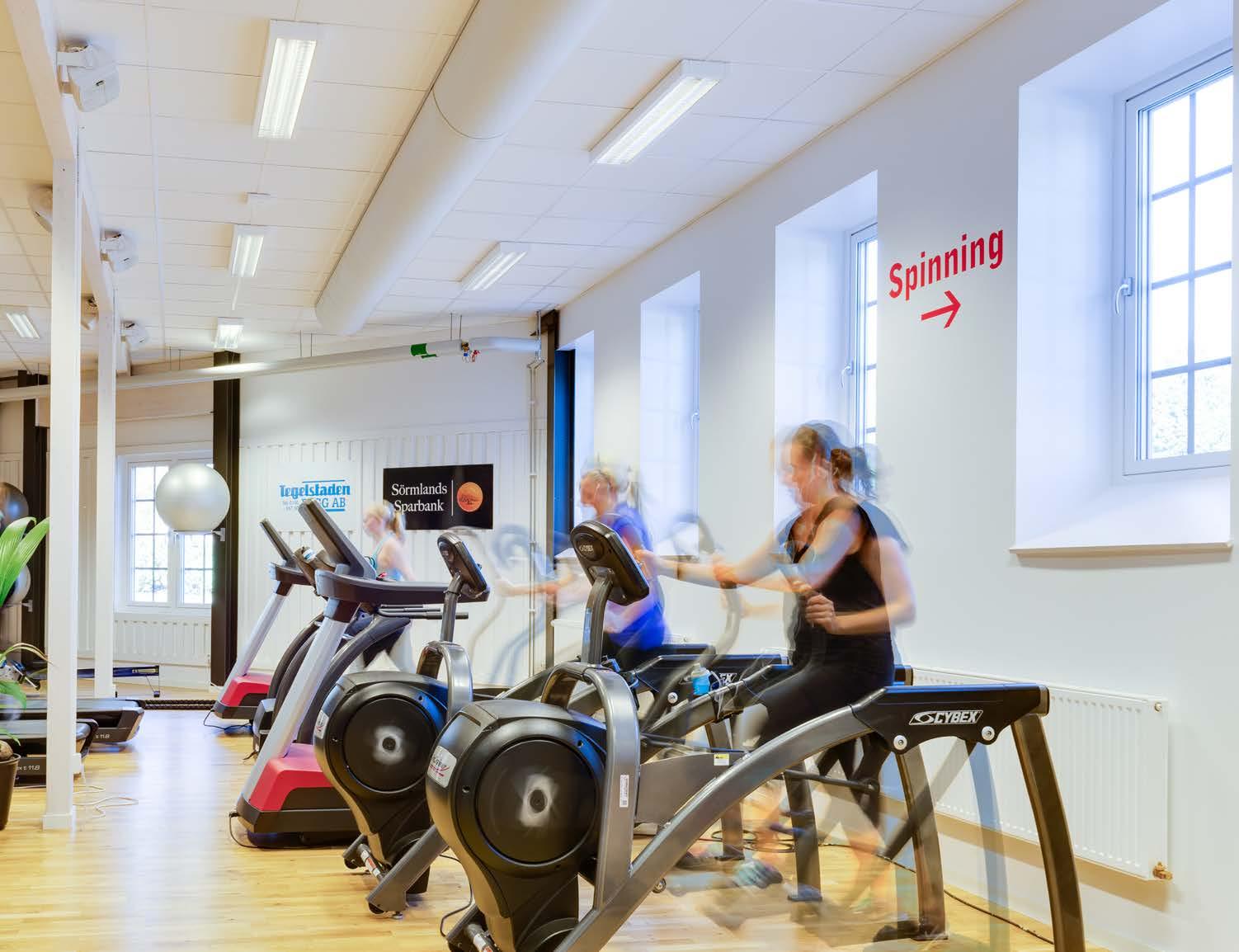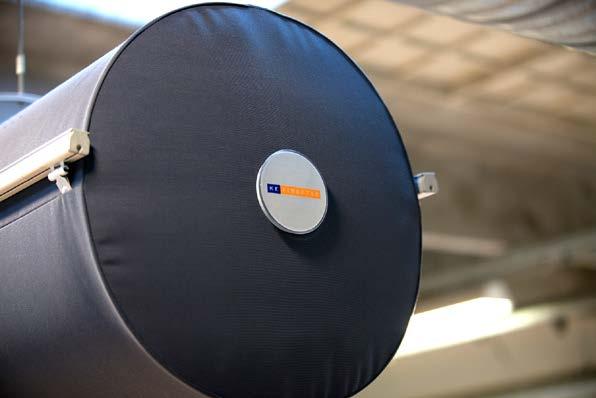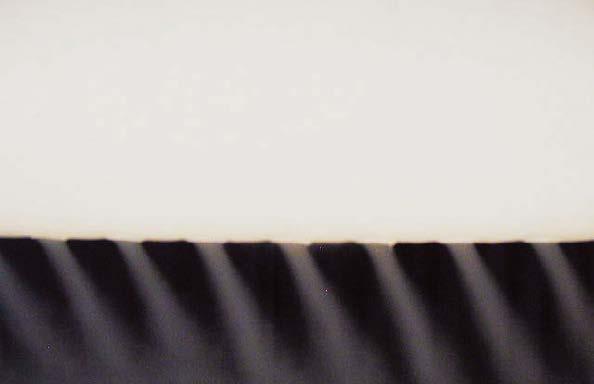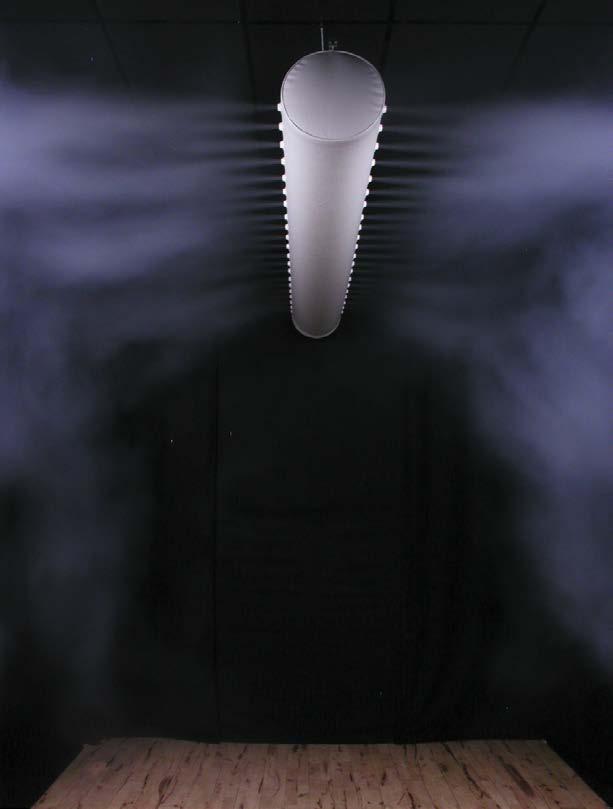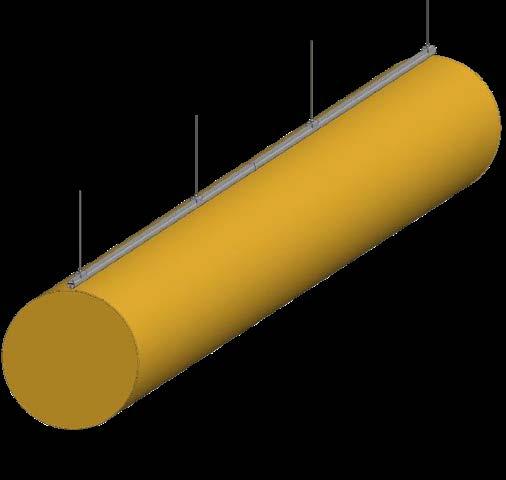
5 minute read
Sound levels and measurements
Sound calculations.
Noise is the name used in everyday parlance for unwanted sound, i.e. sounds that irritate, disturb or harm people. A well-dimensioned ventilation system must therefore make little noise. KE Fibertec considers it important to be able to document how much noise our TBV systems make. In this section a brief description of the theory behind the sound calculations is given.
Where does noise come from?
In a ventilation system the sources are noise from the actual installations, as well as noise generated by the air’s movement. Noise generated by the installations originates mainly from the air conditioning system where fans generate noise. By the very nature of this phenomenon, KE Fibertec cannot say how much noise is transmitted by the air conditioning system. It is simply important to point out that this noise needs to be attenuated before it reaches the TBV system as textile ducting cannot attenuate fan noise.
KE Fibertec’s documentation applies to noise generated by the air’s movements, i.e. noise created by the pressure drop/fluctuations which arise in the textile duct. In low impulse systems the inlet velocity is often the critical factor. In the case of KE Fibertec’s high impulse systems, the outlet velocity through the holes or nozzles is often the critical factor.
Sound power and sound pressure.
The sound power P is a direct measurement indicating how much sound power a sound source is trans-mitting. The sound power is therefore directly linked to the sound source and is measured in watts (W). The sound pressure p is a measurement of the sound’s strength at a given distance from the source. It is characterised by the pressure vibrations which an ear picks up or is measured using a sound meter. Sound pressure expresses how the listener perceives the sound and largely depends on the location of the sound source and the room’s acoustic properties. Sound pressure is measured in Pascals (Pa).
What is sound?
Sound is the vibration of air molecules in the atmosphere that can be sensed by the ear. As the air molecules are set in motion, they radiate outwards, colliding into other air molecules until they strike the ear drum.
Sound power level and sound pressure level.
Given that the human ear’s perception of sound is almost logarithmic, a logarithmic scale has been introduced to specify sound in the audible frequency range. As a result, when it comes to performing acoustic calculations, the concepts sound power levels, Lw, and sound pressure levels, Lp are used.
The sound power level Lw is linked to the sound source and is independent of the room’s acoustics. The sound power level is expressed in decibels (dB). The sound pressure level Lp is directly dependent on the sound power level and expresses how the listener perceives the sound. It largely depends on the location of the sound source and the room’s acoustic properties. The sound pressure level is expressed in decibels (dB).
Room attenuation.
Room attenuation specifies the difference between the sound power level transmitted and the sound pressure level exerted in the room. This means that the sound pressure level is obtained by subtracting the room attenuation (RA) from the sound power level generated by the source.
The relation between the sound power P and the sound power level LW is described by the following expression: LW = 10 x log (P/Pre)
Where: P Actual sound power transmitted [W] P re Reference sound power (10-12 W)
The relation between the sound pressure p and the sound pressure level Lp is described by the following expression: L p = 20 x log (p/pre)
Where: p Actual sound pressure [Pa] pre Reference sound pressure (20 mPa)
Room attenuation specifies the difference between the sound power level transmitted and the sound pressure level exerted in the room. RA = L w - L p Where: RA Room attenuation [dB]
What influences the noise in the room?
Unlike the sound pressure level, the sound power level is a product-specific value. As a result, the TBV system’s acoustic features are specified at a particular sound power level. If the sound pressure level also needs to be used, the room attenuation has to be estimated. Room attenuation is, as stated on the opposite page, an expression of the difference between the sound power level transmitted and the sound pressure level exerted in the room. Room attenuation is, by its nature, very complicated to calculate properly as it depends, e.g.:
• Geometry and dimensions of the room • The room’s surface characteristics • Location of the textile ducts • Number of textile ducts • Distance from the source to the recipient
When a sound is emitted from a sound source, it is received in the room as either direct sound or reflected sound. The further away the location of the source, the less the direct sound will contribute to the overall sound pressure level perceived by the ear. The reflected sound will be of the same magnitude throughout the whole room and depends on the room’s soundproof properties, which can be described as an equivalent absorption area (A). The absorption area is specified in the unit m2 Sabine.
The most reliable method for determining the room attenuation is to take measurements of the reverberation time in the relevant room. However, as it is rarely possible to do this during the design phase the room attenuation can be estimated by using diagrams. These diagrams are shown in datasheet 25. Diagram 1 operates by using the relevant room’s volume as an input parameter for finding the equivalent sound absorption area (A). The distance from the textile duct (r) is then used, along with the directivity coefficient (D) to determine the room attenuation (RA). The directivity coefficient can be estimated based on the table to the right.
As shown in the table to the right, the directivity coefficient for D-shaped ducts fitted in the ceiling will always be 2 or 4, depending on whether the duct hangs in the middle of the room or along a wall.
What is noise?
Noise is undesirable sound that causes damage or is troublesome. We each experience noise in different ways.
What is sound power level?
The sound power level, Lw, is measured in dB and and is the acoustic energy emitted by the sound source. It is not affected by the surroundings.
Sound power level (Lw ) Sound pressure level (Lp)
What is sound pressure level?
The sound pressure level, Lp, is measured in dB and quantifies the magnitude of sound. The sound pressure level is influenced not only by the power of the source but also by the surroundings and the distance from the source to the recipient.
What is decibel?
Decibel (dB) is a logarithmic unit used for expressing the ratio of two powers. The most common use is in measuring sound power level and sound pressure level.
4
On the ceiling along side wall <0.5 m
2 1
On the ceiling Cantilevered
Type of textile duct Directivity coefficient
Cantilevered 1
On the ceiling On the ceiling along side wall 2
4


